In this, the second part of AM’s latest Manufacturing Insight, Thierry Koskas, Citroën’s brand chief executive, discusses the zero-emissions challenge facing both the UK and Europe, competitive pressure from Chinese brands and Citroën’s unique offering in the all-electric B-segment with the arrival of the e-C3.
Thierry Koskas has had plenty of high-flying roles in the French automotive industry but one posting he remembers fondly was his time toiling at the retail equivalent of the coal face in the East End’s Commercial Rd.
It prepared him well, helping him to build a career in the most senior sales and marketing positions at Stellantis predecessor PSA after Renault where for three years between 2009-2012 he was charged with developing the car’s maker’s electric vehicle strategy. That saw the launch of four models including the Zoe, Twizy, Fluence and Kangoo.
In this, the second part of AM’s latest Manufacturing Insight, Thierry Koskas, Citroën’s brand chief executive, discusses the zero-emissions challenge facing both the UK and Europe, competitive pressure from Chinese brands and Citroën’s unique offering in the all-electric B-segment with the arrival of the e-C3.
Thierry Koskas has had plenty of high-flying roles in the French automotive industry but one posting he remembers fondly was his time toiling at the retail equivalent of the coal face in the East End’s Commercial Rd.
It prepared him well, helping him to build a career in the most senior sales and marketing positions at Stellantis predecessor PSA after Renault where for three years between 2009-2012 he was charged with developing the car’s maker’s electric vehicle strategy. That saw the launch of four models including the Zoe, Twizy, Fluence and Kangoo.
He is therefore well-equipped to manage demanding production targets under the UK’s zero-emissions (ZEV) mandate but is also confident of facing the challenge of competition from China whose manufacturers are only just starting to flex their significant industrial clout in EV manufacturing.
In June, the European Commission announced that it would apply additional tariffs on Chinese-made EVs based on the results of its nine-month investigation into the levels of state subsidies received by different Chinese or China-based carmakers. This unfair support, it believes, results in hefty distortions in the European market.
The investigation has three more months to run at which point the Commission may propose definitive five-year duties. EU member states are required to vote those through although a recent indicative vote has demonstrated a certain wariness over the impact of additional tariffs on global trading relationships.
A dozen EU members are reported to have voted in support of the tariffs, four voted against and 11 abstained. In the vote, France was reported to be one of the four member states to have supported the tariffs.
International Perspective
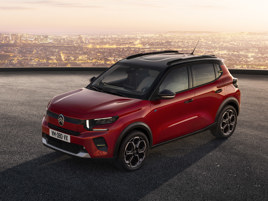 A French national, Kosvas is sanguine about the competitive pressure from Chinese brands. When asked about the risk of being squeezed by new Chinese brands entering the market and selling their EVs at a loss through heavy discounting, Koskas is confident that Citroen will rise to the challenge.
A French national, Kosvas is sanguine about the competitive pressure from Chinese brands. When asked about the risk of being squeezed by new Chinese brands entering the market and selling their EVs at a loss through heavy discounting, Koskas is confident that Citroen will rise to the challenge.
"We are better placed than other competitors towards the Chinese offensive because when you look at the e-C3, a car priced at £23,000, we don't have so many competitors, so we are probably much better placed."
Koskas can certainly count himself as a citizen of the world if his curriculum vitae is anything to go by. Koskas was Renault’s man in Argentina and Hungary and also had the considerable challenge of the Asian and African markets as part of his dossier.
The EU decision to impose tariffs of up to 38% on imported Chinese EVs will, in the absence of any compromise by Brussels and Beijing, likely slow growth prospects. In fact, between January and June, the growth of EVs made by Chinese brands available in Europe dropped 4% across the big five markets. Any ongoing uncertainty could also prompt Chinese OEMs to sharpen their focus on developing and emerging economies.
This leads Koskas to note that if the additional duties are given the greenlight by EU member states, in the short term, Citroën as a member of the western manufacturing community may benefit as Chinese cars will more expensive to buy.
“But,” he adds, “we should never rest because of the tariffs. Why? Because we don't know what will happen in the future. Maybe at one point, they will fade away or disappear. And also, let's not forget that we are competing with our cars not only in Europe but in many countries worldwide."
According to Jato Dynamics, between 2022 - 2023, the market share of Chinese brands in the Middle East grew from 12.9% to 16.8%, and in Eurasia – where they are now the most popular cars – their market share grew from 12.4% to 33.3%. Southeast Asia-Pacific and Africa also saw growth of 1.9 and 2.3 percentage points, respectively.
Multi-Energy Advantage
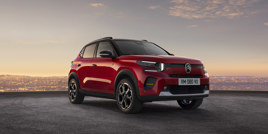 Here, Citroën will look to reap the benefits of its acutely finessed production techniques which he believes will give the French car maker the edge.
Here, Citroën will look to reap the benefits of its acutely finessed production techniques which he believes will give the French car maker the edge.
Pivotal to that success is the Stellantis Smart Car Platform. More efficient than other STLA modular architectures, Koskas describes the multi-energy platform as "super-efficient and versatile, enabling us to create very affordable cars with all the necessary equipment."
In providing a common engineering framework to produce BEV, hybrid and combustion engines (ICE) vehicles seamlessly, the platform’s flexibility could provide the critical resilience needed as the market finds its balance between battery electric and hybrid models.
Koskas explains the strategic advantage that Citroën's multi-energy platform offers: "It allows us to be competitive and optimised whatever the powertain is. Previous generations of cars, were ICE cars adapted to make BEV versions which means they are limited. Here, it's a car that has been designed right from the beginning to accept a super-efficient battery."
"We are super flexible because of that. We are not the only manufacturers to have that, but others took the route of having specific models or platforms for EVs. Now, they may be optimised for other powertrains, but there is a lot of risk in case you have to move in the short term between BEV and ICE."
When asked about the current market pivot towards hybrids, Koskas says Citroën will need all the flexibility that the Smart platform can provide: " I'm happy that we will have hybrid on all our models but we are lucky that we have a multi-energy platform which means that we would be able to adapt to any move in the market.”
"The real protection against the Chinese offensive is to be competitive. That's why we are insisting so much on making affordable cars with the new platform."
Saving Through Efficiency
Affordability has been achieved not only through the common platform but also by purposefully keeping options on its latest lineup limited when customers come to choose one of the manufacture’s core models. That’s one reason why Citroen decided that an online configurator was no longer necessary.
 A case in point is Citroen’s smart new budget petrol and hybrid candidate - the Citroën C3 - which has been totally reinvented and which will rival some of the cheapest cars on sale today at only £17,790
A case in point is Citroen’s smart new budget petrol and hybrid candidate - the Citroën C3 - which has been totally reinvented and which will rival some of the cheapest cars on sale today at only £17,790
The supermini will also be available in an all-electric form as the e-C3 which is due to land on these shores in October and which will cost from £21,990.
Meanwhile, the old C3 will remain on sale for a while - it’s been renamed C3 Origin and will be priced at a highly attractive £15,000.
There is therefore very little fat to cut should the car maker come under pressure, especially considering that it has set itself the target of capturing a 5% share of the European market.
Koskas, however, is adamant that Citroën will observe the discipline required to maintain its new net price strategy, saying: "The beauty of the net price strategy is it has to be applied with a lot of rigour. If you start to say, I want to compete against this competitor and I'm going to start discounting, the policy will not work. So that’s why it will be applied with a lot of discipline."
He believes wholeheartedly in the strengths Citroën has in terms of a resilient European brand: "We have to highlight all the assets that we have as a European brand in the UK, which means the capillarity of our network, the trust that we have generated towards our customers, and the strength of being part of a big group such as Stellantis."
Regulatory Challenge
 For an industry executive who cut his retailing teeth in London’s tough East End, Koskas is accustomed to operating within a challenging retail environment. In a year when the UK set manufacturers the task of increasing their EV sales to 22% of their sales mix under the ZEV mandate, Citroën has gained significant experience.
For an industry executive who cut his retailing teeth in London’s tough East End, Koskas is accustomed to operating within a challenging retail environment. In a year when the UK set manufacturers the task of increasing their EV sales to 22% of their sales mix under the ZEV mandate, Citroën has gained significant experience.
This will stand it in good stead when similar tough measures come into effect throughout Europe next year when car makers need to ensure that a quarter of their sales will be EVs to support market uptake of zero-emission vehicles based on CO2 emissions.
In 2025, it will require new car tail-pipe emissions to be reduced by 15% compared to 2020; by 55% in cars and by 50% in vans by 2030 and achieve a 100% reduction meaning exclusively 100% zero-emission vehicle sales by 2035.
Discussing Citroën’s BEV sales, Koskas shared: "So far this year in the UK, 10% of our sales are BEV (generated by the e-C4). The situation will be very different in the second part of the year because we will have the e-C3 so we will have a big boost by the end of the year and next year, we will be enjoying a full year of the e-C3 and e-C3 Aircross."
"It's very interesting that the C3 mix we have is around 60% on EV and 40% on ICE in France and Italy, where there is a big incentive to buy EVs. This makes us confident in our capacity to sell the EV version."
Incentives will remain crucial to support EV sales and Koskas insists that consistent support from governments is needed: "The European Union decided a few years ago that there will be a big jump in 2025 in zero-emission requirements. That has not been questioned by anyone since then, so we just have to do it. We have in front of us a huge challenge and it will be very challenging to be at 25% EV next year in Europe."
Even so he is confident that Citroen will meet those EV sales targets: “These steps have been known for years, and we have prepared for that. We have factories that make electric motors and batteries, so we have been preparing for the shift. The challenge for us is how do we get 25% of our customers next year in Europe asking for a BEV?"
Several manufacturers have spoken of restricting the sale of ICE vehicles in the UK market in order to meet UK government targets for EV sales and divert sales to other countries in order to avoid heavy fines.
Koskas here rejects the idea of limiting ICE supply to push BEV sales, stating: "To limit your offer to customers because you are not able to sell enough BEVs would be very sad. At the end of the day, you are not responding to customer needs, and you are limiting your potential for development."
The EV Cost Paradox
One of the chief blocks to consumer uptake is the high cost of buying a EV. Koskas says innovation will help meet the challenge of BEV pricing, noting: "The gap will go down. It's just amazing to see how the technology is evolving and how the cost is evolving as well.
“I'm lucky to have been making electric vehicles for many years. The cost of a kilowatt-hour battery used to be around €400 but that will probably go down dramatically because of technologies down the road."
While true price parity is a laudable goal, in the intervening period, Koskas says the focus for retailers should be firmly placed on communicating the total costs of EV ownership.
"The e-C3 is currently an anomaly in the market with no rivals, but it’s not going to last. Even so, we want the choice to be a positive choice, which means that a customer can say ‘I made my calculations. I checked my monthly instalment. Yes, it's higher than the C3 ICE, but the savings on electricity versus petrol offsets those higher instalments’.”
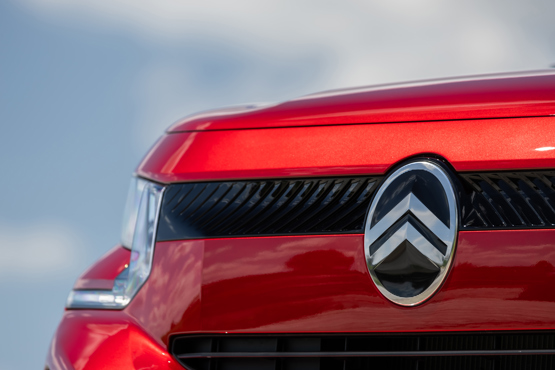
Login to continue reading
Or register with AM-online to keep up to date with the latest UK automotive retail industry news and insight.




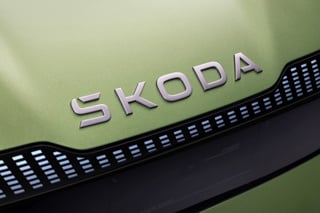
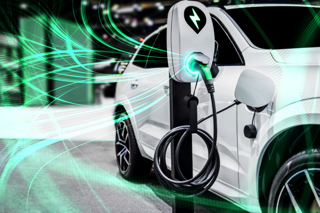

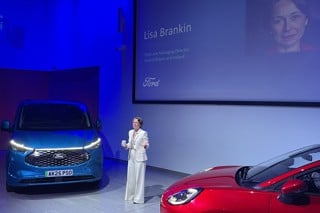
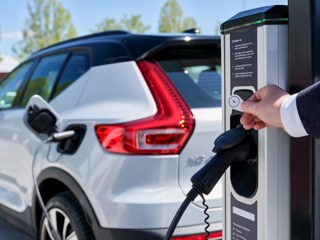










Login to comment
Comments
No comments have been made yet.